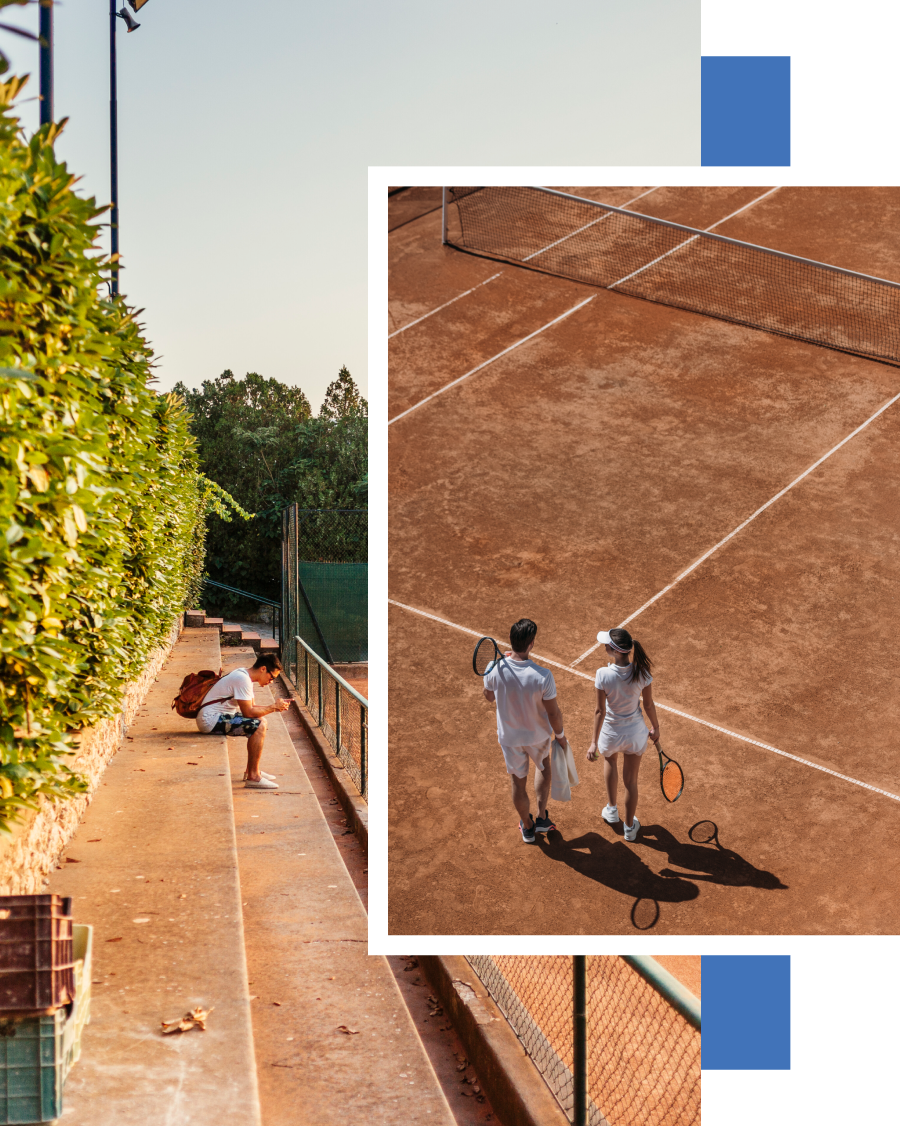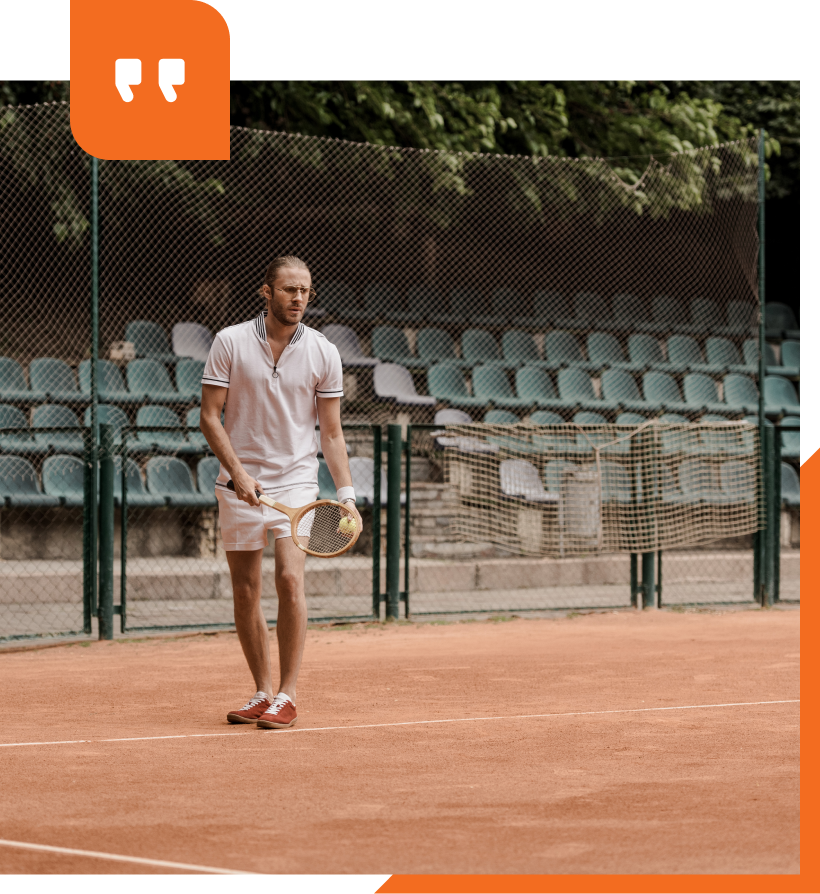
Construction
Clay Court
Construction
in Florida
Our Company has over 35 years of experience in constructing Tennis Courts, including Clay Courts, and our Clients appreciate that our vast knowledge in building Clay courts goes into every project. This experience has allowed Mor Sports to grow to become recognized as the leader in the construction of quality Clay Courts.
Having been involved in the Construction, Refurbishment, and Maintenance of Clay Tennis Courts since 1991, we are proud to have been a part of the drive to introduce them in Europe, and we have put those skills to good use in Florida, where we build some of the finest Sub irrigated and Overhead irrigated Cay Tennis and Bocce Courts.
“Clay” is part of a group of sports surfaces used mainly for Tennis and Bocce and is just one of the many different types of surfaces we provide. Our emphasis on quality has led to Mor Sports working at some of the world’s most prestigious tennis facilities.
Benefits of
Clay Court
Clay court construction is creating a tennis court surface using clay materials. It is widely used in professional and recreational tennis for its unique characteristics and numerous benefits. So, what is clay court?
It is a tennis court surface of crushed shale, brick, or stone mixed with fine sand.
KEY BENEFITS OF CLAY COURTS
1. Excellent player traction
They provide exceptional traction, allowing the players to slide and change directions quickly.
2. Slower game pace
They slow the ball's speed compared to other court surfaces like grass or hard courts. This slower pace gives players more time to react and execute shots, making them well-suited for strategic and tactical play styles.
3. Reduced impact on joints
The forgiving nature of this court helps absorb the impact of players' movements, reducing strain on joints and minimizing the risk of injuries. This is especially beneficial for players with joint or knee issues.
4. Longer rallies
Due to the slower game pace and enhanced player traction, they often lead to longer rallies. The investment in clay court construction cost can contribute to a more thrilling and entertaining gameplay experience.
5. Durability and maintenance
Proper construction can be highly durable and long-lasting. Regular maintenance, such as rolling, watering, and clay court resurfacing, helps maintain the court's integrity and playing characteristics over time. Despite the initial clay tennis court construction cost, the long-term durability and reduced maintenance expenses make it a cost-effective choice for tennis facilities.
Our Clay Court Construction Services
Our construction of Tennis and Bocce Clay Court Facilities begins with excavating, grading, and compacting the court's sub-base. This part of the operation is carried out by machines controlled by laser, ensuring that we have a uniform base with the correct slope, which is suitable for us to build the court upon.
Trenches are dug for the floodlight ducting, and net posts and floodlight foundations are set out as part of the base preparation works.
The construction process continues with the installation of curbs, where precise string lines are set out in each corner and the line of the curbs. Concrete is poured into the formwork, and the curbs are then sat onto the concrete with a clean and tidy haunch formed to the visible side. The fence is then installed to the perimeter curb with openings prepared for each gate.
Court Construction – Sub-Irrigated Courts
Mor Sports are proud to be the builder of the Modified Hydro Court System. This unique underground watering System is the preferred choice of many of our Clay Court Clients, which Mor Sports have been installing since 1991 at some of the finest venues in the world.
Court Construction – overhead Irrigated Courts
We install water feed pipes and sprinklers into the court in a set pattern for overhead watering systems. Once the system is connected, Screenings are laid onto the court footprint until the entire area is covered.
The final step for both sub-irrigated and overhead-irrigated courts is to install the Clay once the screenings are laser leveled and rolled firm. The clay material is installed on top of the screenings in a single, firm, unified layer "bonded" by moisture. A minimum of 1" of clay is installed per court, and it is recommended that this 1" of material is retained throughout the court's life. As the clay remains constantly "wet," a pre-mixed binder is added to ensure it continues to lock together. Again, to ensure quality, this operation is carried out by laser-controlled machines.
It is highly recommended that this minimum depth of material is retained throughout the court's life to maintain the quality of the court.
For all tennis courts, regardless of the watering system, the job is completed by installing playing lines, nets, and posts.
Clay Tech Courts
Clay Tech is a high-tech clay court that is a cost-effective way of owning a Clay Tennis Court. The Clay Tech system is ideal for overlaying existing hard courts as the subsurface is a carpet membrane laid and glued down over a concrete or asphalt base, then the thin layer of Har Tru material is applied on top. The system is a cost-effective option to convert clay courts from hard courts. In addition, it is ideal for courts where cracking is an issue, as it will bridge many cracks and deficiencies in the substrate. The carpet membrane is a 1/4" needle punch textile that never requires rolling, and the playing lines are painted on as part of the construction process.
ClayTech's natural clay top layer and synthetic polypropylene membrane create an attractive, uniform, sliding court surface.
Construction Process
The clay court construction process involves several steps to ensure a high-quality playing surface. Here is an overview of the typical construction process:

Introduction Phase
Client Relations Manager meets to discuss clay court needs, conducts a site survey, and provides a quote.

Pre-Construction Phase
Documentation and permits for clay court construction are prepared.

Construction Phase
The clay court site is prepped, materials are sourced, clay surface is laid, and boundaries are set.

Cure Times & Surface Preparation
Clay court lines are painted and the surface is prepped for play.

Hand Over to Client
The clay court is ready for tennis matches!
Court Maintenance
At Mor Sports Group, we specialize in court maintenance for all types of courts. Our dedicated team is skilled in providing comprehensive care to ensure your court remains in optimal condition. Trust us to keep your court safe, functional, and aesthetically pleasing, so you can focus on enjoying the game.
With our court maintenance services, we offer regular inspections, thorough cleaning, necessary repairs, and proper drainage system maintenance. Our goal is to prolong the lifespan of your court and enhance its durability. Whether you have a clay court, hard court, or any other surface type, we have the expertise to cater to your specific maintenance needs.
Client Testimonials



